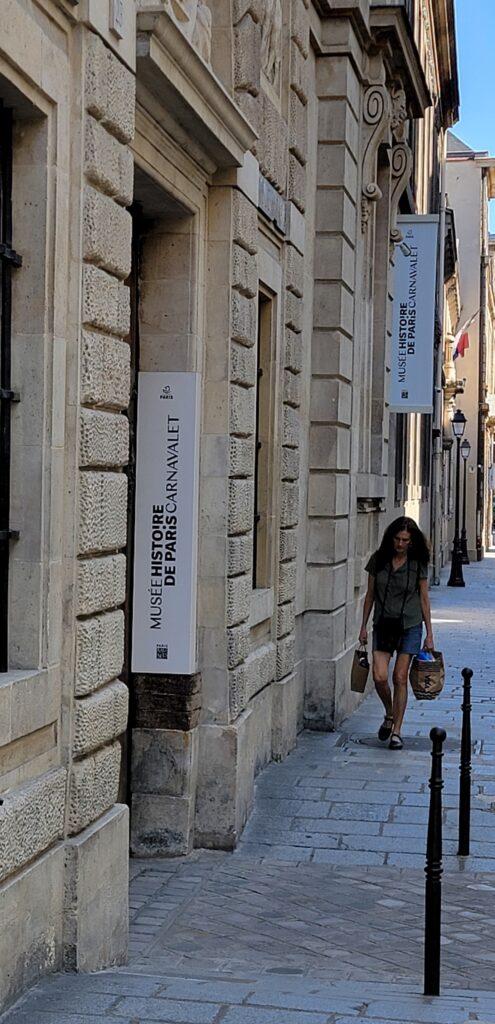Okay, so *first* of all, if you are at all interested in Paris, you need to subscribe to the podcasts/YouTube videos/email newsletter from Earful Tower. Trust me on this. I am now a Patreon supporter (plus, I did a huge support of their latest kids’ book, so I have a “street named after me” in the “Paris map” in the back!). It’s just so well worth it. Oliver Gee is Australian. Amazingly (to me, since I’ve followed him nearly from “when he started”) he has now been on the Today Show, did a description of Phryges (and why the French love this mascot so much) on NBC-TV, etc. He and his wife (who is ?Swedish?) also do children’s books that are just charming.

We are doing two tours with Earful Tower, one in the Marais (which is on their website), and one with our friends who are also at the Olympics, in the Latin Quarter.
Since there are six of us, Oliver agreed to set up a tour there, after I saw his “walk around” on YouTube of the Latin Quarter, and knew that our friends had their VRBO there.
Our tour guide, Hannah, met us at the Peloton Cafe. She was wonderful. Her parents had a home in France so she had been visiting “since a zygote,” but has a super charming Irish accent. She has lived full time in Paris for quite a few years now. (She also does cycling tours, and will be doing our Latin Quarter tour.)
We started off by learning a bit about the way that Paris used to look before Napoleon III (who is the one who shot Victor Noir, remember?) hired Haussmann to basically come in and knock down 1,000s of these houses to give Paris its uniform “Look.” In the top middle photo below, the Haussmann buildings are on the left and right of the original buildings. Napoleon III had been exiled in Britain which, after its big fire, had rebuilt in a more modern way, including enclosed sewers, etc. When Napoleon came back, Paris had no sewers, so that was fixed, but more importantly, it was only about 100 years after the Revolution and Napoleon figured if there were riots, he wanted access for his cannons to get in and “take care of business,” which was next to impossible in the streets as they were. Haussmann buildings all follow the same formula – shops at the bottom, 8 stories tall, with balconies on 1 and 6/7. It was also an extremely efficient way to pack a lot of people into a smaller space – Paris is not that big.
One of the interesting things is that – due to the flats being pretty small and therefore kitchens being pretty small – folks don’t shop for that much “all at once” and also eat out more. Hence so many cafes.
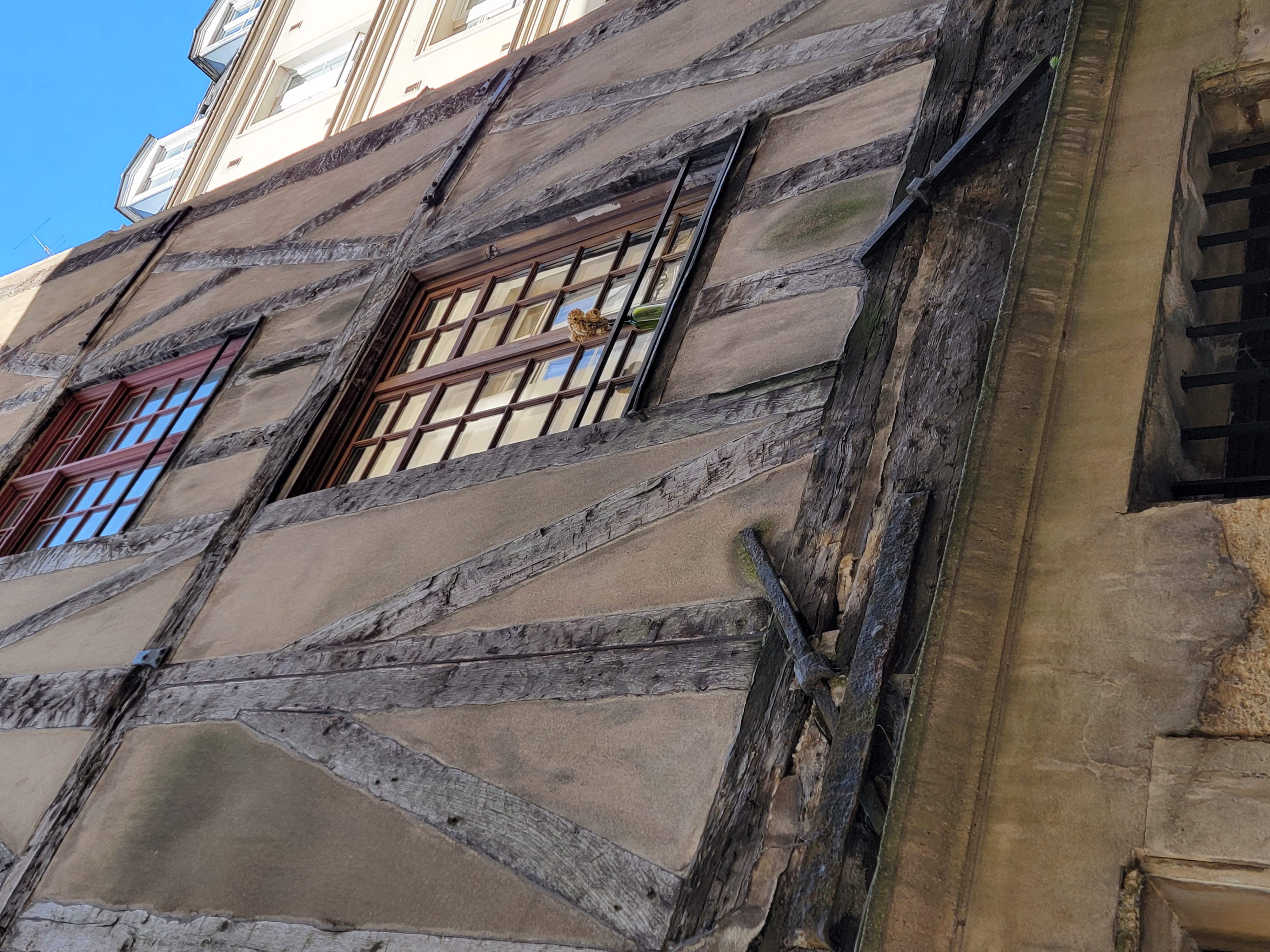

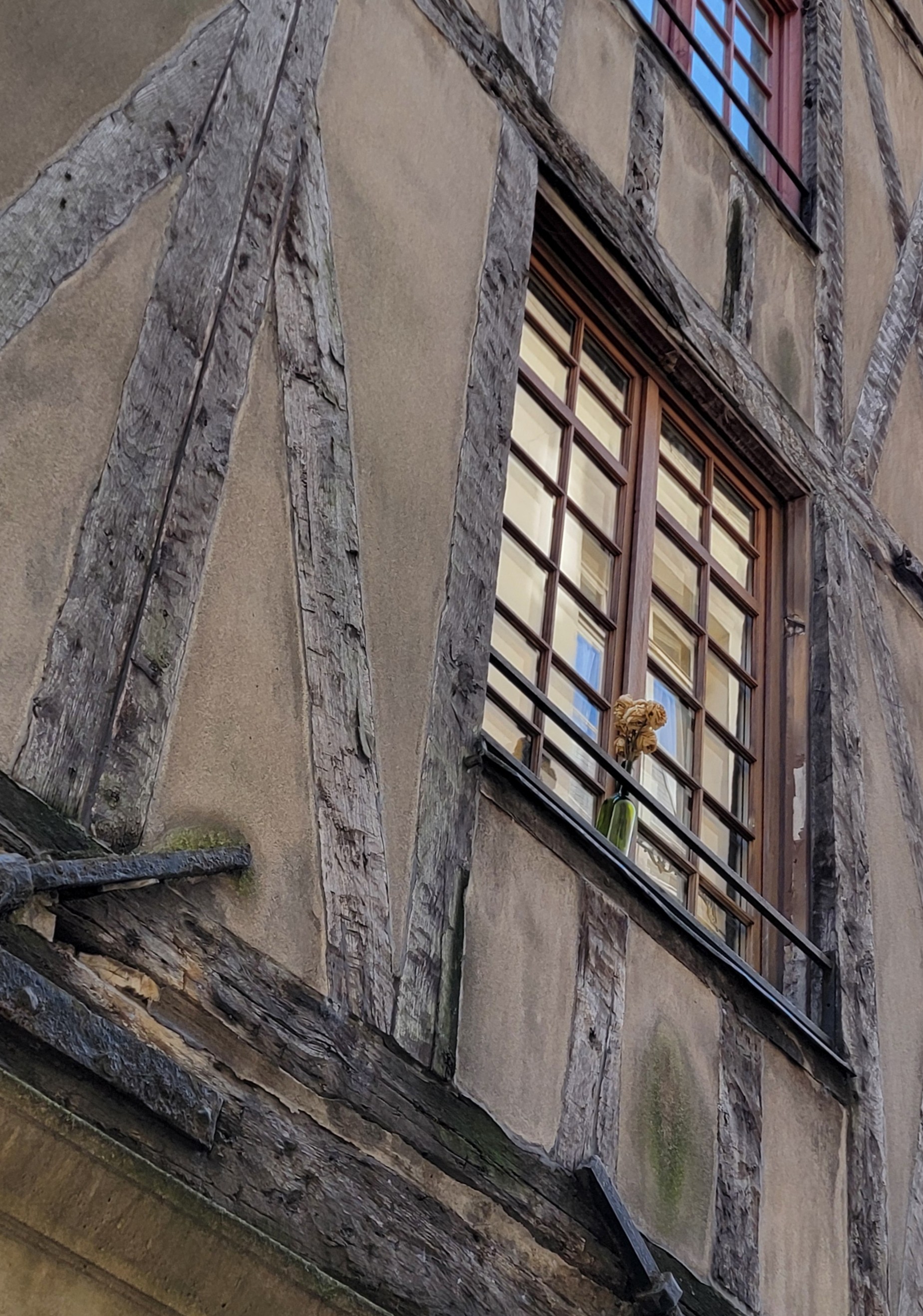

The pre-Haussmann homes that remain are very, very difficult to maintain. They were owned by the super rich in Haussmann’s time and in fact, it seems that many of them are still within “the family” all these 100s of years later. (They just looked down their noses at the folks dictating that they were “required” to do this renovation for the good of Paris and said, “Mais, Non.”)
Given that I am currently going through an enormous renovation at *my* house, I definitely understand the issue!



Next we talked about the Wallace fountains, which you can see above. There were about 200 of these all around Paris (there are about 50 left). Paris is crazy about water – in fact, France has two water museums, and there are “Keepers” of the Wallace fountains! These fountains give fresh, clean water (and since I was in Paris last, some have even been retrofitted with misters; to keep the temperature down in Paris, the misters go off now and again). Originally there were cups attached to chains, so people just used the cups to drink their portion from the fountain. The problem was that the cups were *never* cleaned. They were blamed for an enormous COVID-like outbreak a few 100 years ago, and so the government removed the cups (but left the fountains, thank goodness). I believe that Hannah said that instead of the Wallace fountains, they now have more modern ones, that give both still and sparkling water.

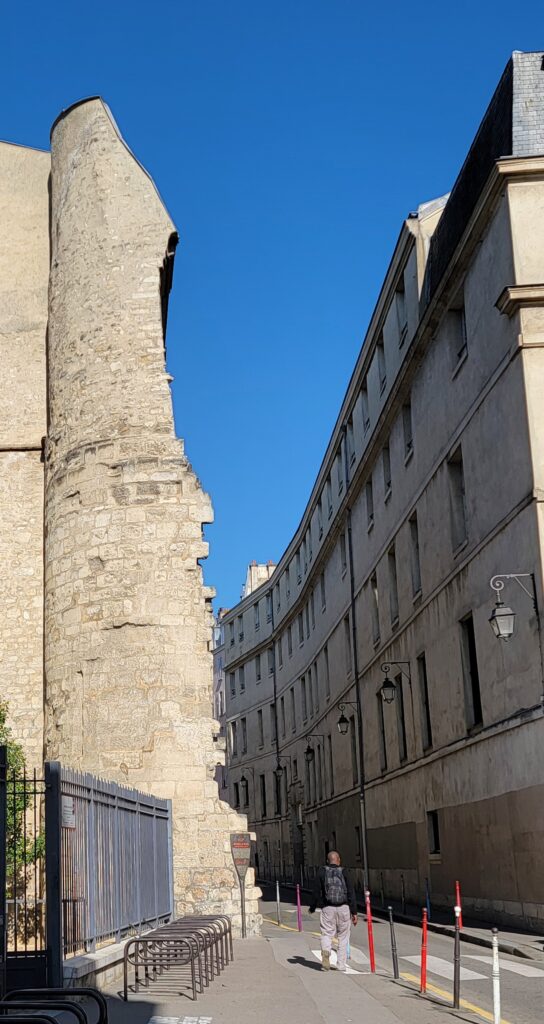

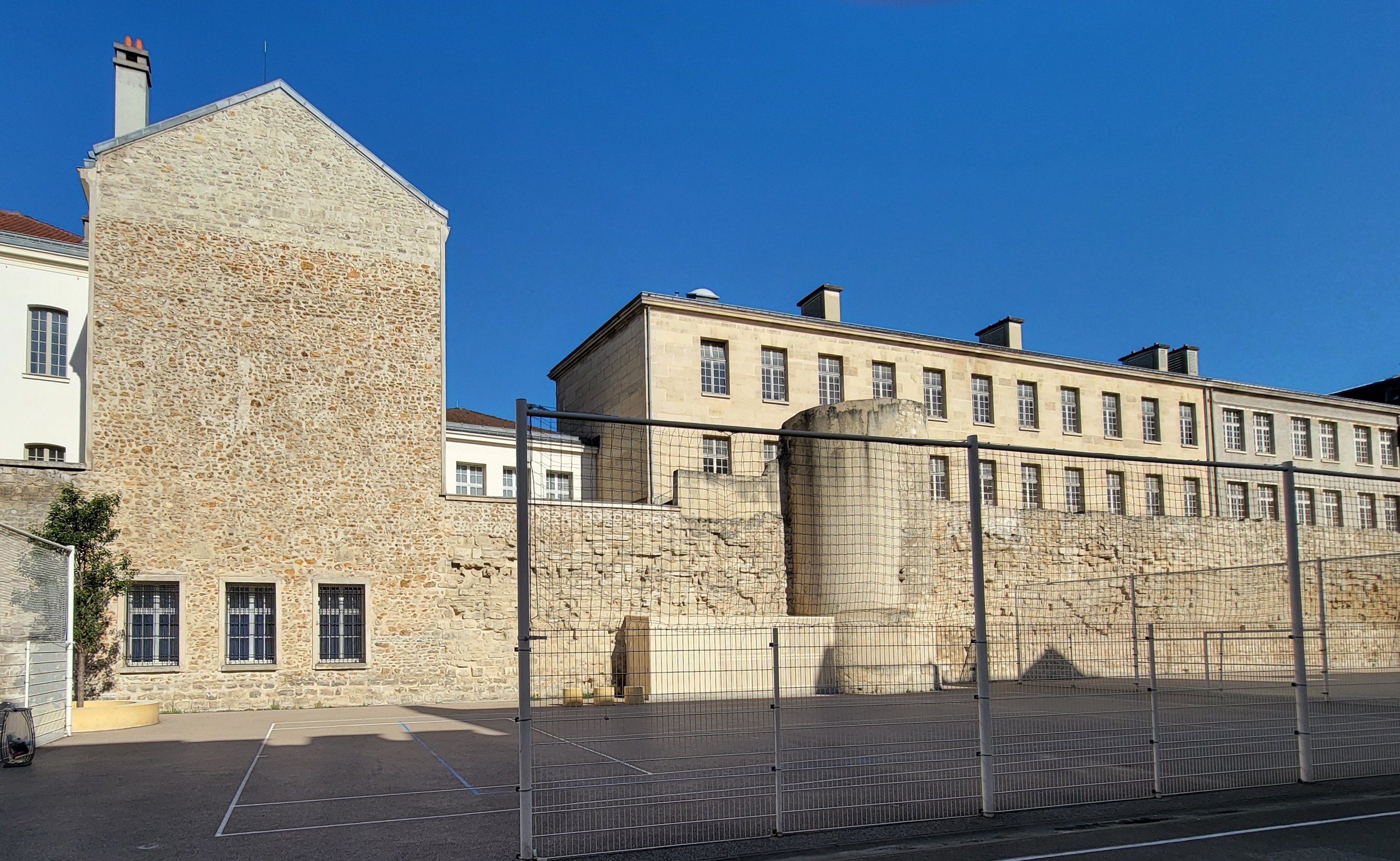
I only took a few notes while we were doing this tour so, though I have lots of photos, I can only explain a few of them :-) The photos above are of the wall that used to surround Paris. Philippe Augustus didn’t want to go to the Crusades, though he was expected to go. He didn’t want to leave Paris vulnerable, especially as England had breached the coast. The wall was 16 miles in circumference – Oliver (remember? Earful Tower?) took an old map of the Wall and a new map, and has made it his “mission” to uncover where the Wall is now. :-)
Interestingly, about 450 years after Philippe Augustus, Louis XIV decided that he needed to break through the Wall. Seems like he felt that he was the most powerful ruler and that he didn’t need a wall, his “reputation” would be enough to keep people away.
The wall had been the city of Paris v. the “Country” border, and of course had had towers, with gates in them to drop portcullises (portculli?) and close the city off. There is one left that we were able to see. As you’d need to surrender your weapons at the gate before entering the city, the “men in arms” inside Paris were “gens des armes” – or “gendarmes” (the name of the Metropolitan police to this day).
Then we learned a story about the Duke of Montgomery, who was imprisoned in this particular tower, because he accidentally killed the king in a fencing duel (WHOOPS). Catherine de Medici was his wife and told him not to do the duel, but the king poo-poo’d her fears . . . Yeah, listen to your wife when she has fears, sweetie . . .
The Duke was imprisoned in the tower for four years; when her husband was dying, the king made Catherine promise that she would not be bitter and would ultimately release the Duke. She did what her husband wanted, but then the Duke joined the rebellion to remove her from power….yeah, she had him beheaded. Not only that, she had it written into the law that any of his relatives “to the end of time” would be disinherited, couldn’t own land, etc. Apparently this law was standing until fairly recently.
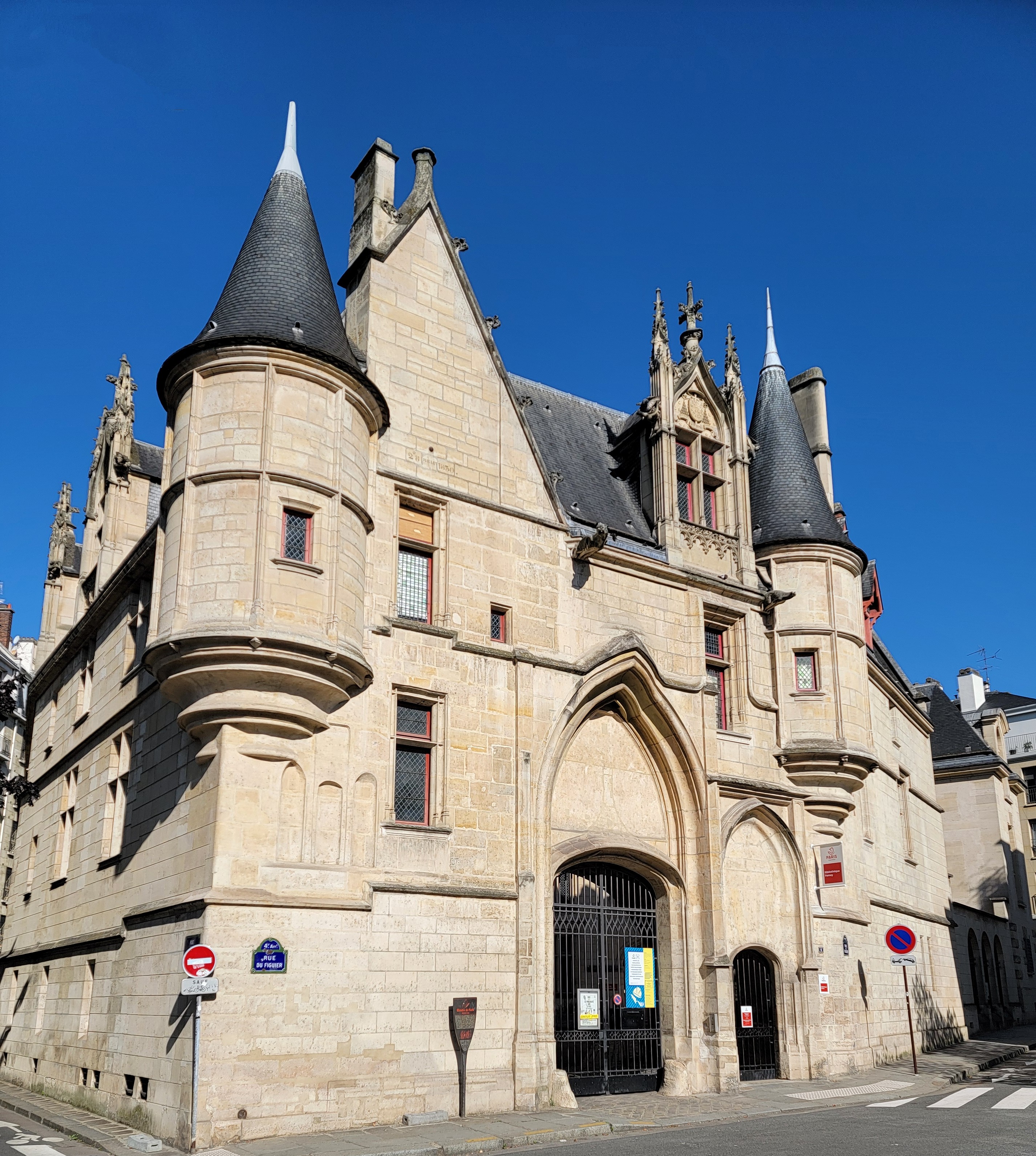
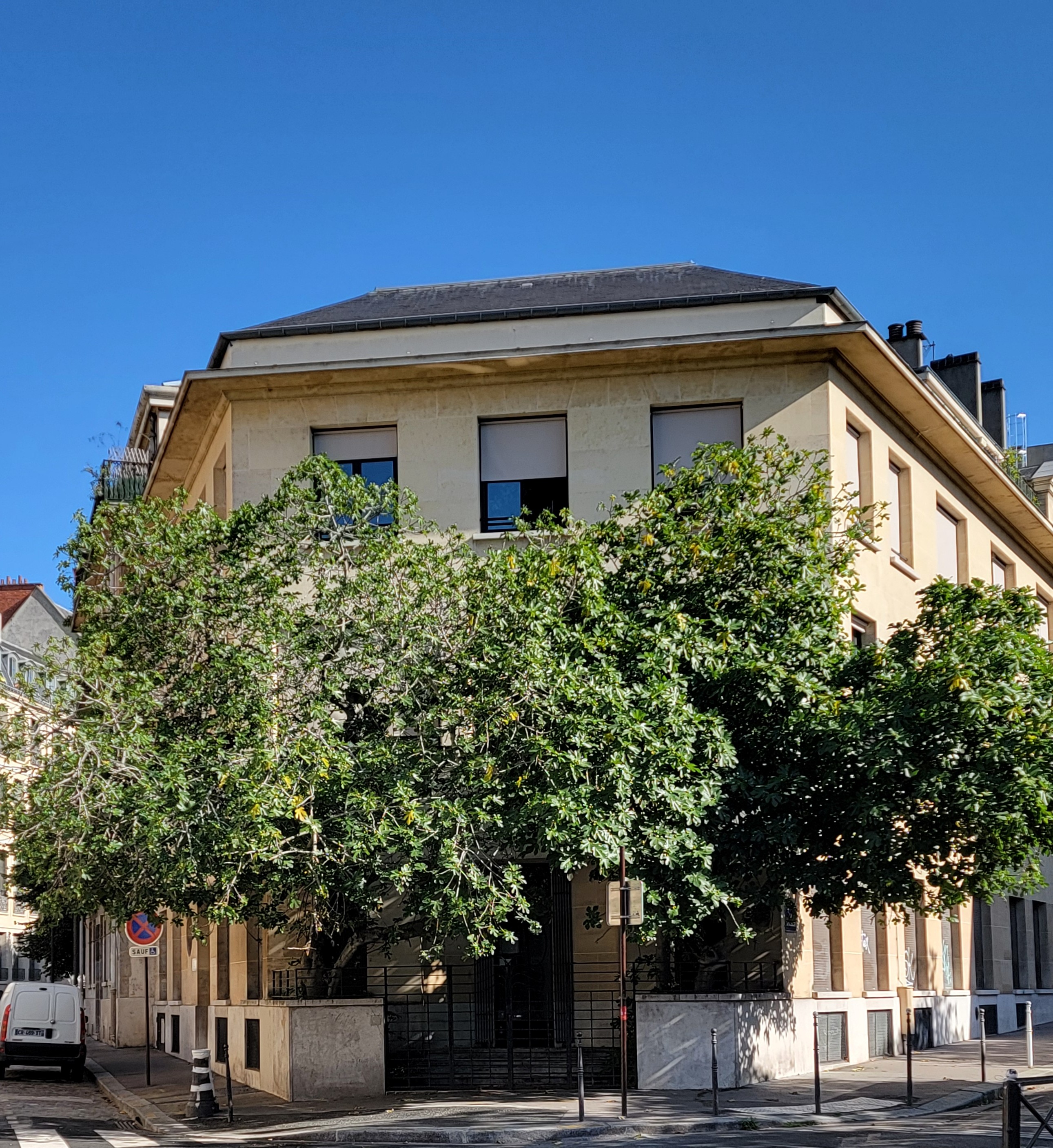





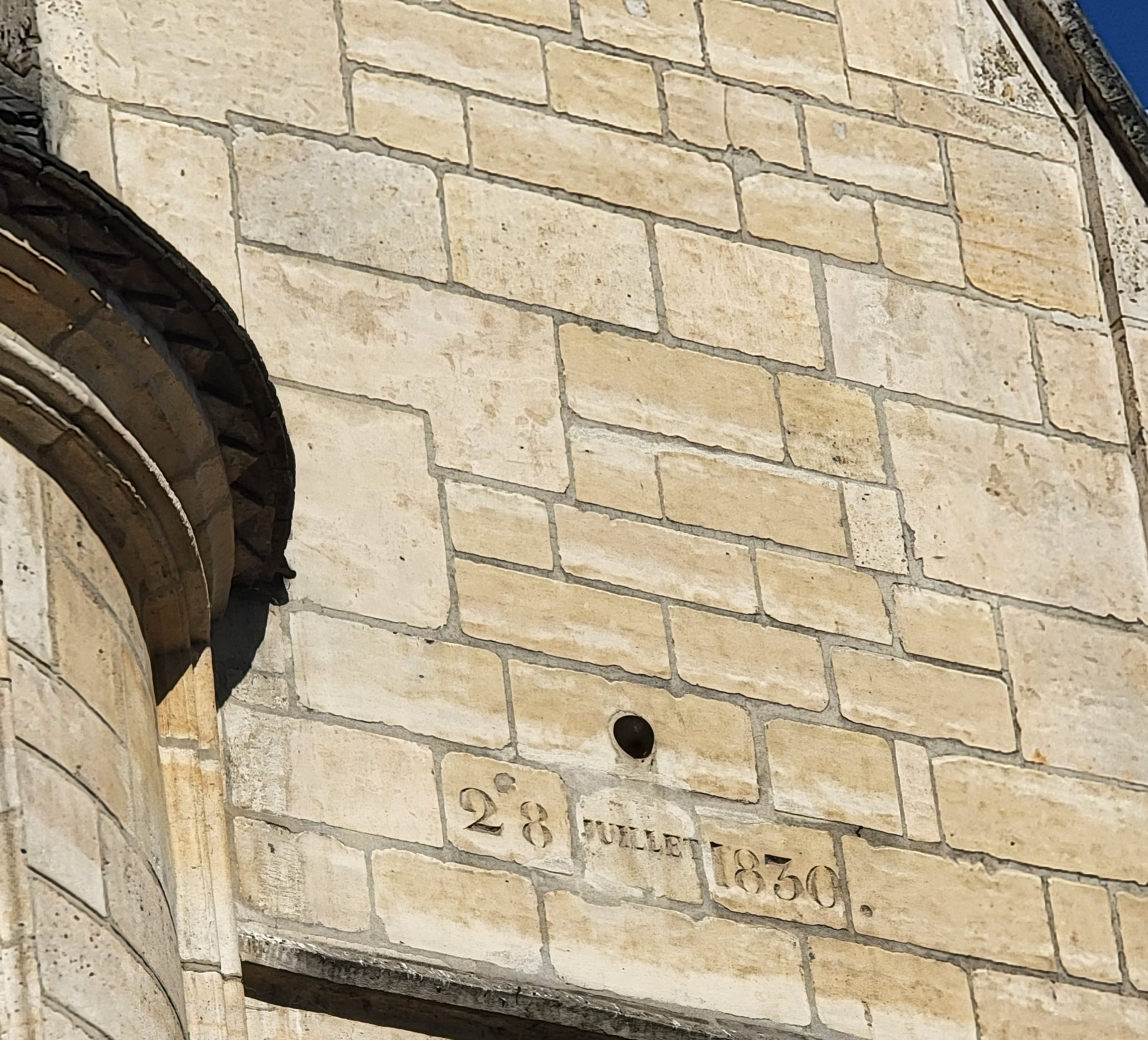
On the street above – “Street of the Fig Tree” (the huge trees are figs) – you can see a building that still has a *cannon ball* in the wall from July 28, 1830. I particularly loved this gargoyle (which gets its name from the French word for “gargle” – which they do with the rainwater, since they are downspouts).
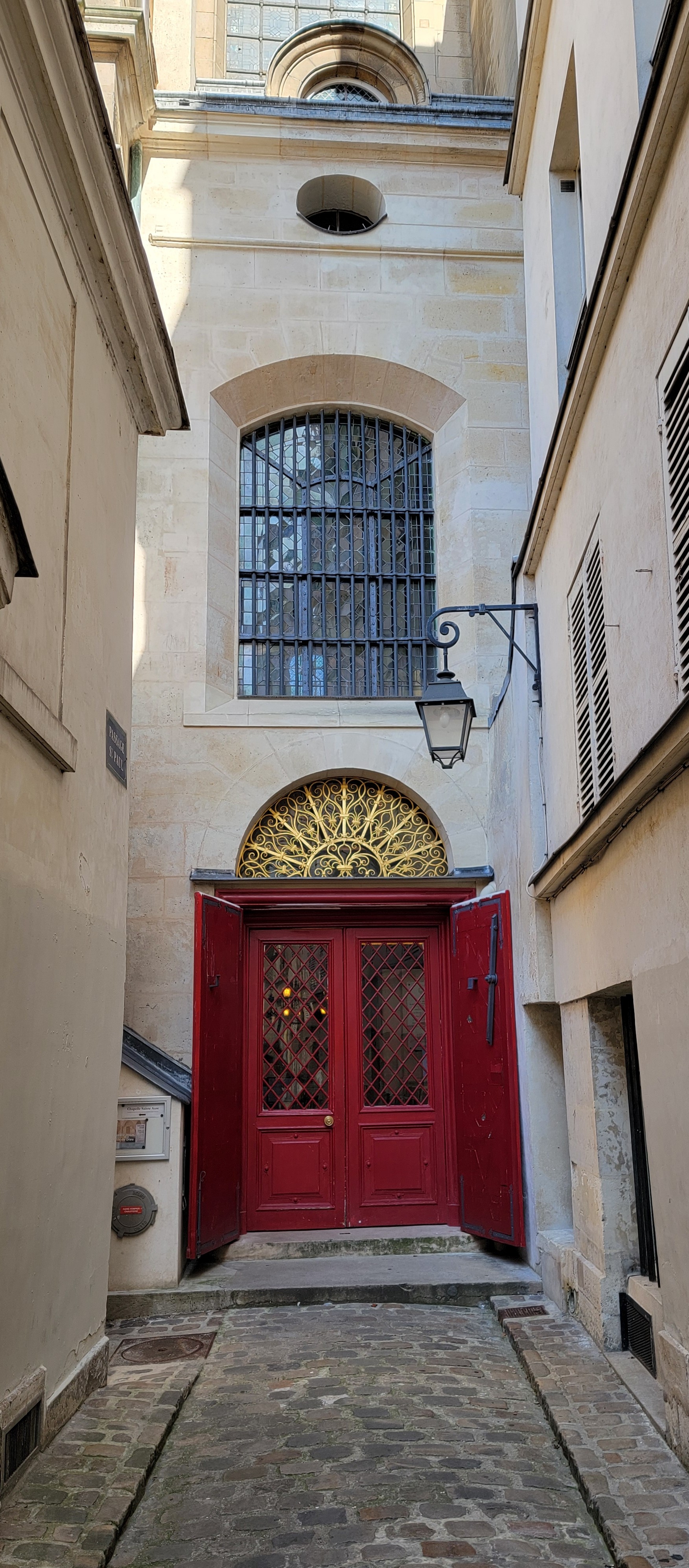








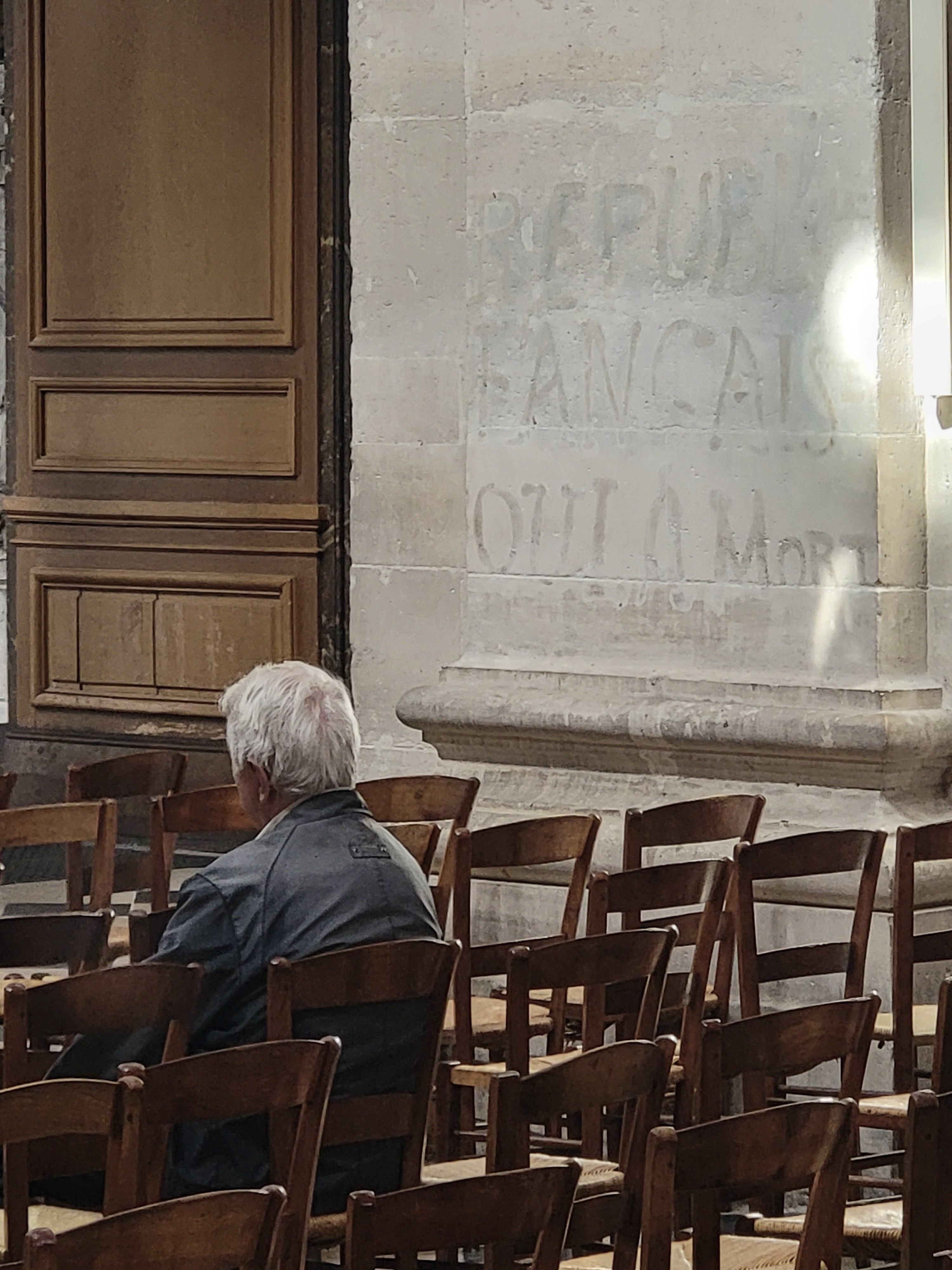


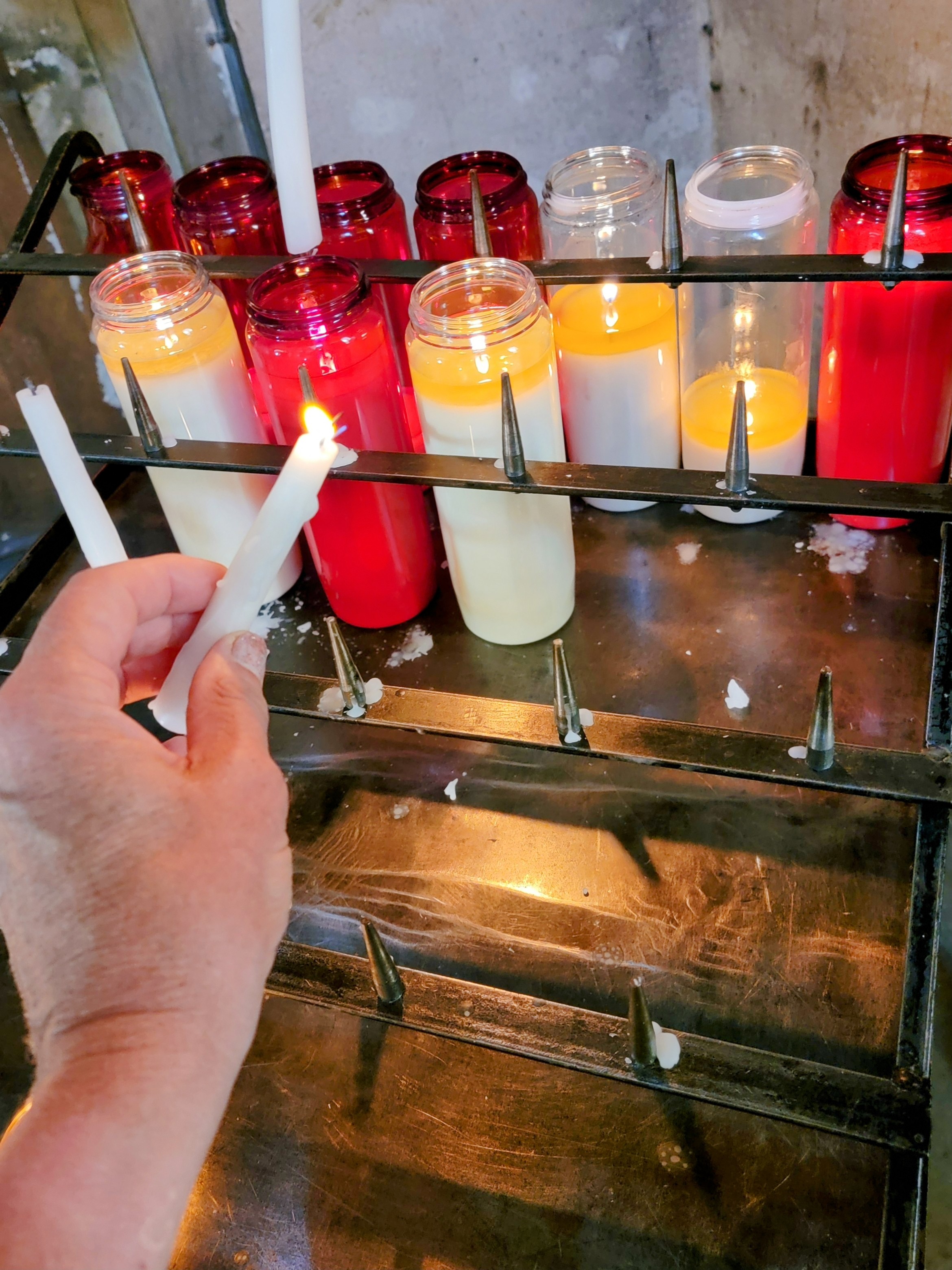




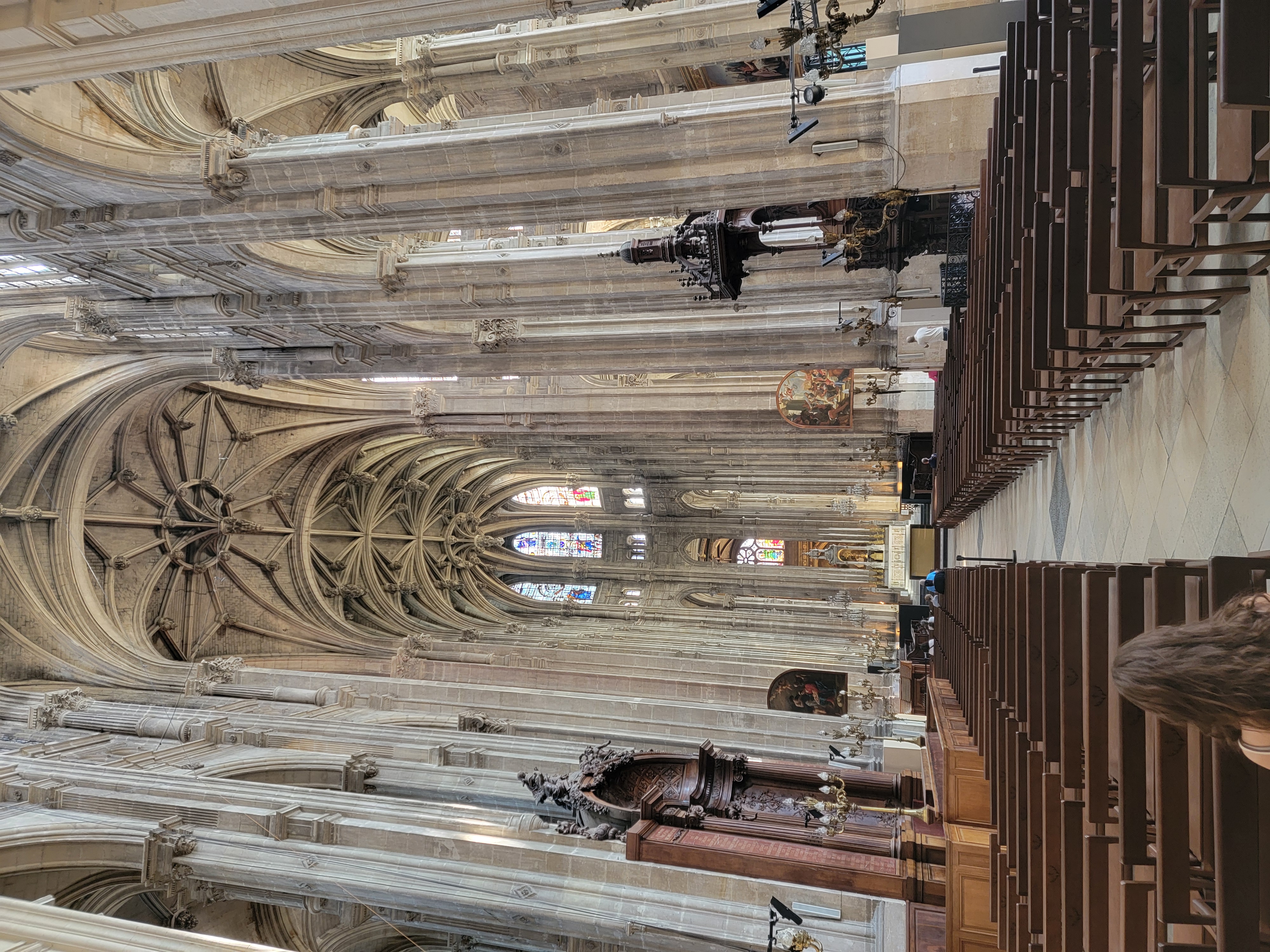
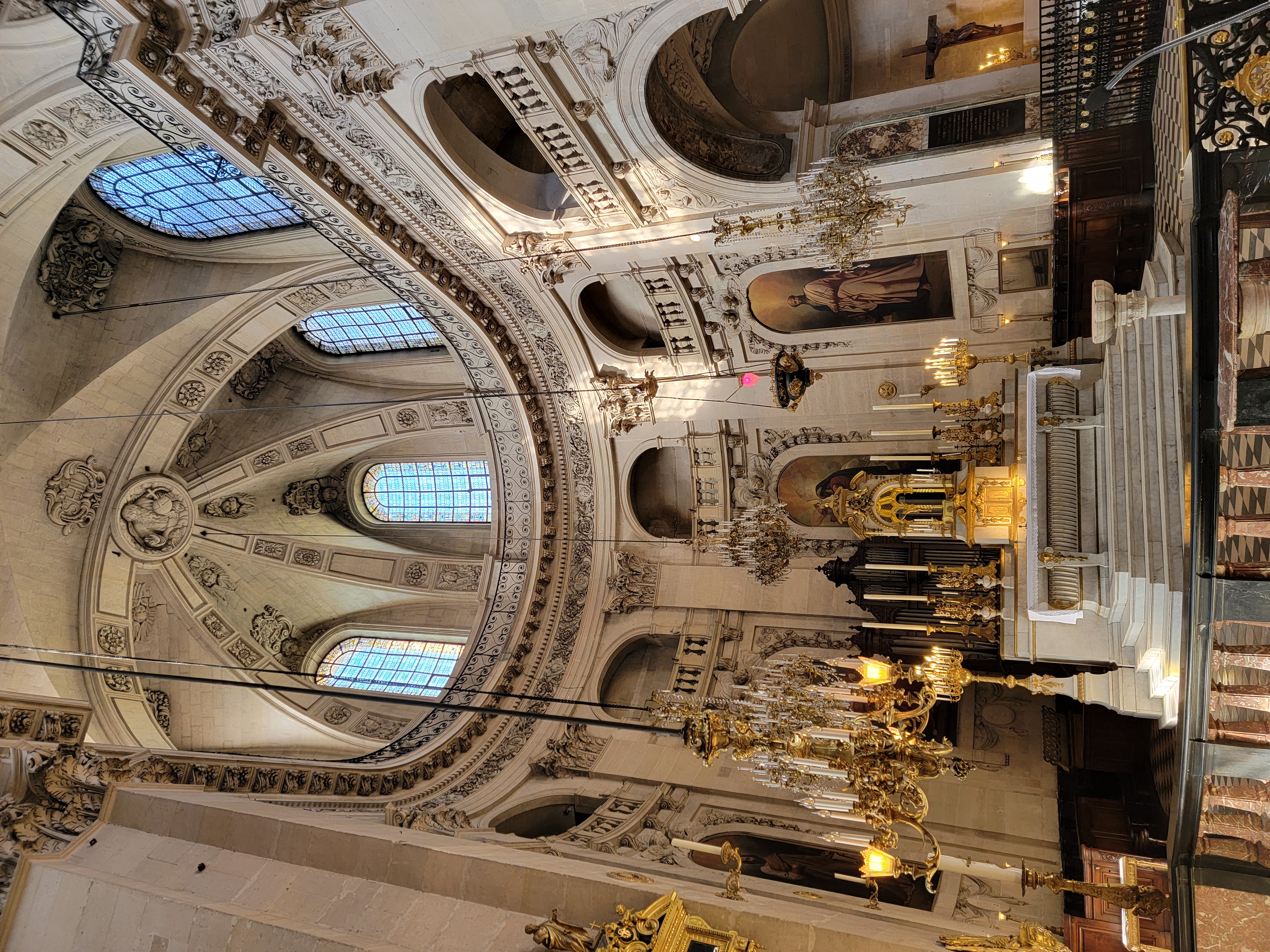


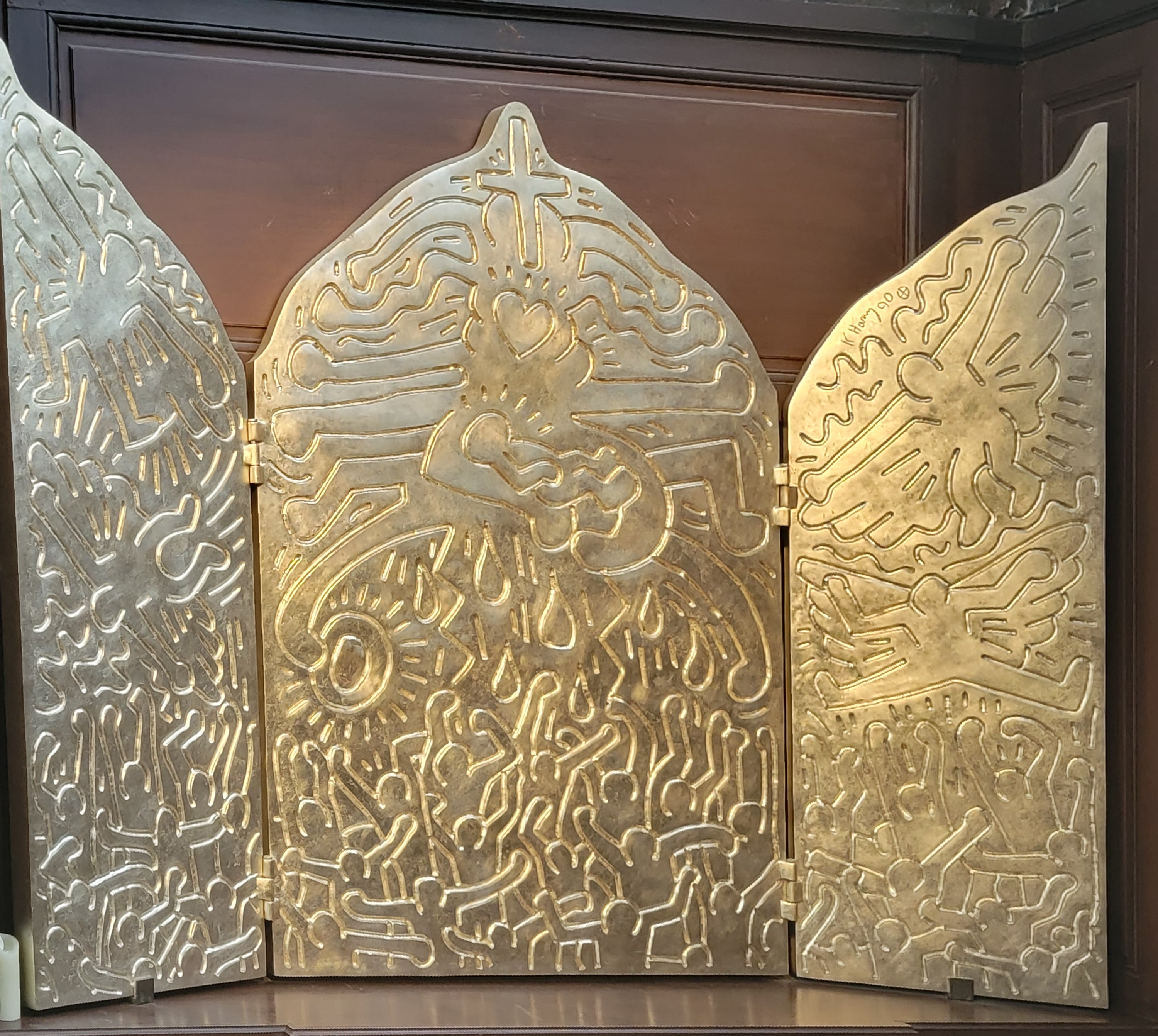
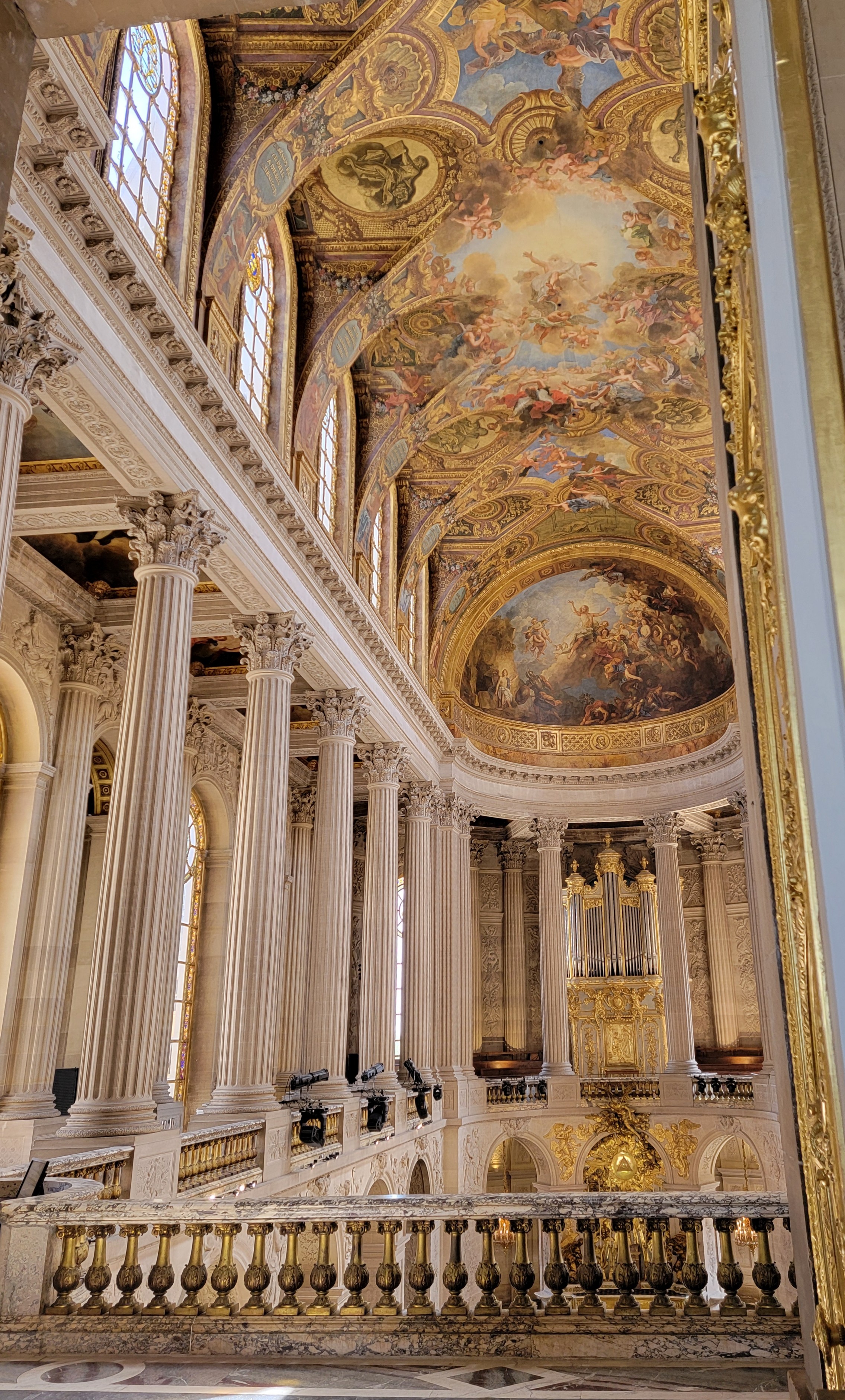

Believe that the name of the church that we visited (behind the red door) was St. Paul’s. The area was very wealthy – this had been Victor Hugo’s church. Cardinal Richelieu was the first cardinal here – at least, that’s what my notes say. What my notes *actually* say are “delicious liberty leading the people, red hat, cardinal Richelieu first, original delicious here”…?? Because I was typing my notes into my cell phone, instead of writing them down in a notebook as I have *always* done before, obviously Siri took over as I was typing. Suffice it to say, I have no idea what “delicious” is supposed to be. Sigh.
Nearly positive the oil of the saint – or perhaps Jesus – holding his hand up to the angels, wrapped in sort of an orange toga – is by Delacroix. Aha! Perhaps “Delacroix” is “delicious”….? :-)
Note St. Louis (remember him, King Louis X, patron saint of…all together now…hairdressers and horse grooms) up in the alcove.
In the 1870s, St. Paul’s was (as I mentioned), very bourgeois, and the Communards (NOT “Communists”) took it over for a couple of months. They felt that they would have some traction if they took over the church. Instead, they were taken out to Pere Lachaise and shot against a wall there. (We did see this area at Pere Lachaise, just didn’t quite understand what it was about.) The “graffiti” above was left on an inside pillar of the church basically as a warning not to do this sort of thing again.
I always buy candles and light them for my Mom’s mom, “Tutu” to me, when I am in any Roman Catholic Churches. That’s what you see here. However – why is it that you are seeing two *different* sets of candles being lit?
Because the blog software wouldn’t let me upload. Later on (when we were on our own), we walked over to St. Eustache, which featured in the story that I wrote when here in my 40s (and also in my favorite book that sort of “explains” about how Parisians feel about Paris, “Almost French”).
So now, I can’t tell which church pictures are which church, as it’s now been two days since we did this tour and my brain is melting. I do know that the “fatter” candles are from St. Paul and the “tapers” are from St. Eustache.
I also know that the lit ladder “to heaven” is at St. Eustache (there was an installation there of light-related art), as is the Keith Haring gold triptych.
At St. Eustache, a service was going on, which we avoided and of course didn’t take photos of. The funniest thing though (to me) was the priest cleaning his hands very thoroughly with hand sanitizer from a squirt container on the altar before handing out the Host. Hmmmmmmm, body of (slightly chemical tasting) Christ for you….? St. Eustache was the stand-in for Notre Dame after it burned right after Easter, Hannah told us.
OKAY, AND…the oil of Napoleon crowning Josephine as his Empress above is from VERSAILLES, but I have been trying to upload it for days and it just “popped in” as one of the church photos. So I’m leaving it. Take THAT, Napoleon. You’re going to be here, not at bougie Versailles. (I happened to really like this oil, but was ready to fuggedaboudit, then it just popped in here.) Note – since obviously Napoleon always must have “ze last laugh” – the only spot I can move that photo is a big one. Yes really. Classic Emperor….

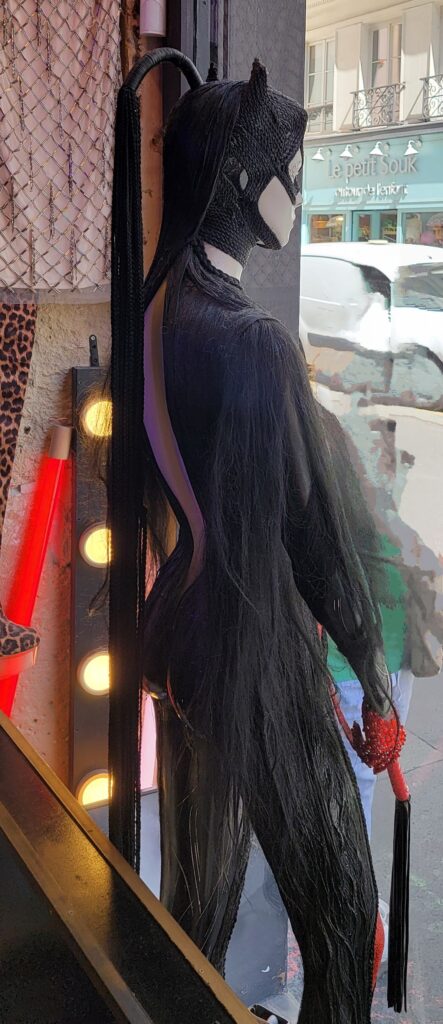
The walk took us through what is obviously a D&S area – a few photos above of some of the shop fronts. I sent them to my friend James whose burlesque/drag King personality is Harry Sass (say it out loud….) – he immediately responded that if the shoes were his size, I had to buy them because he didn’t have any animal print in Harry’s closet. Um, yeah, I love you James but 300 euros just wasn’t in my pocket….
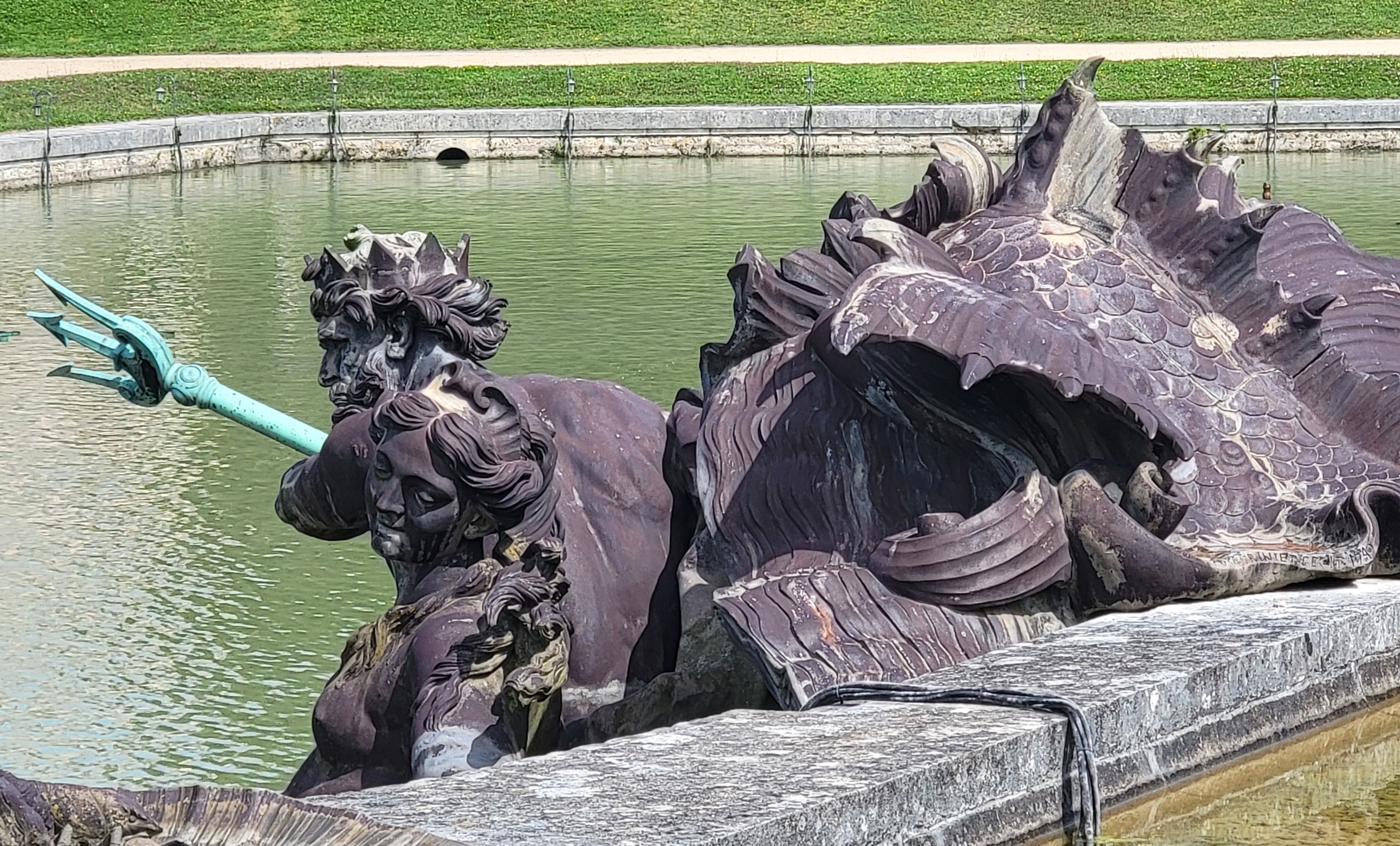







The Marais is built on a swamp – the buildings are a bit wonky. As usual, you could have bought a number of these buildings for a song a while back – they were in terrible shape – but now, yeah, Nope. Okay, and Victor Hugo did NOT live here. And – from Versailles – Poseidon has just inserted himself. You’re welcome.

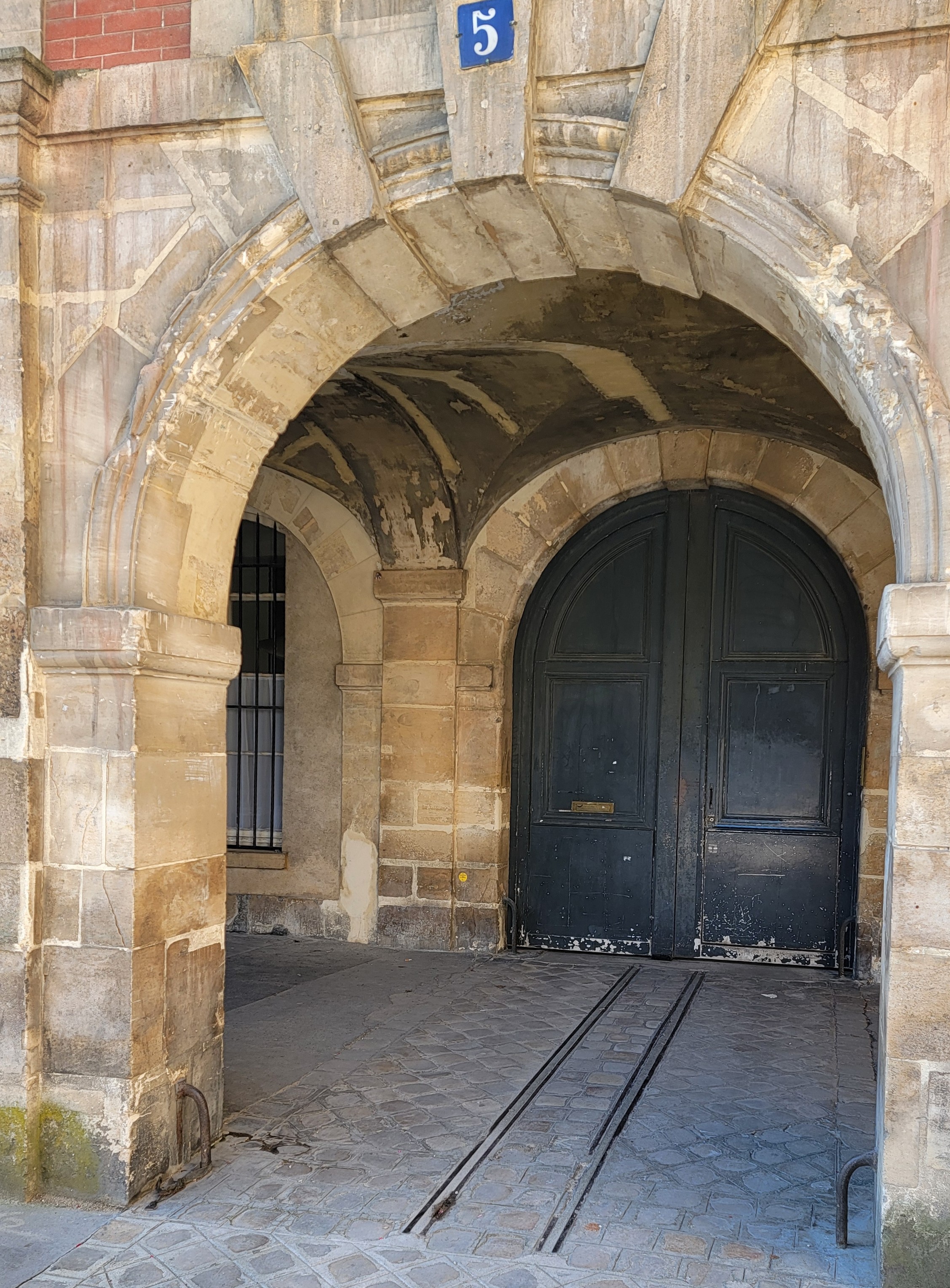
This was where they made the food for the Orient Express – the tracks are where they would take the food out to go to the train.

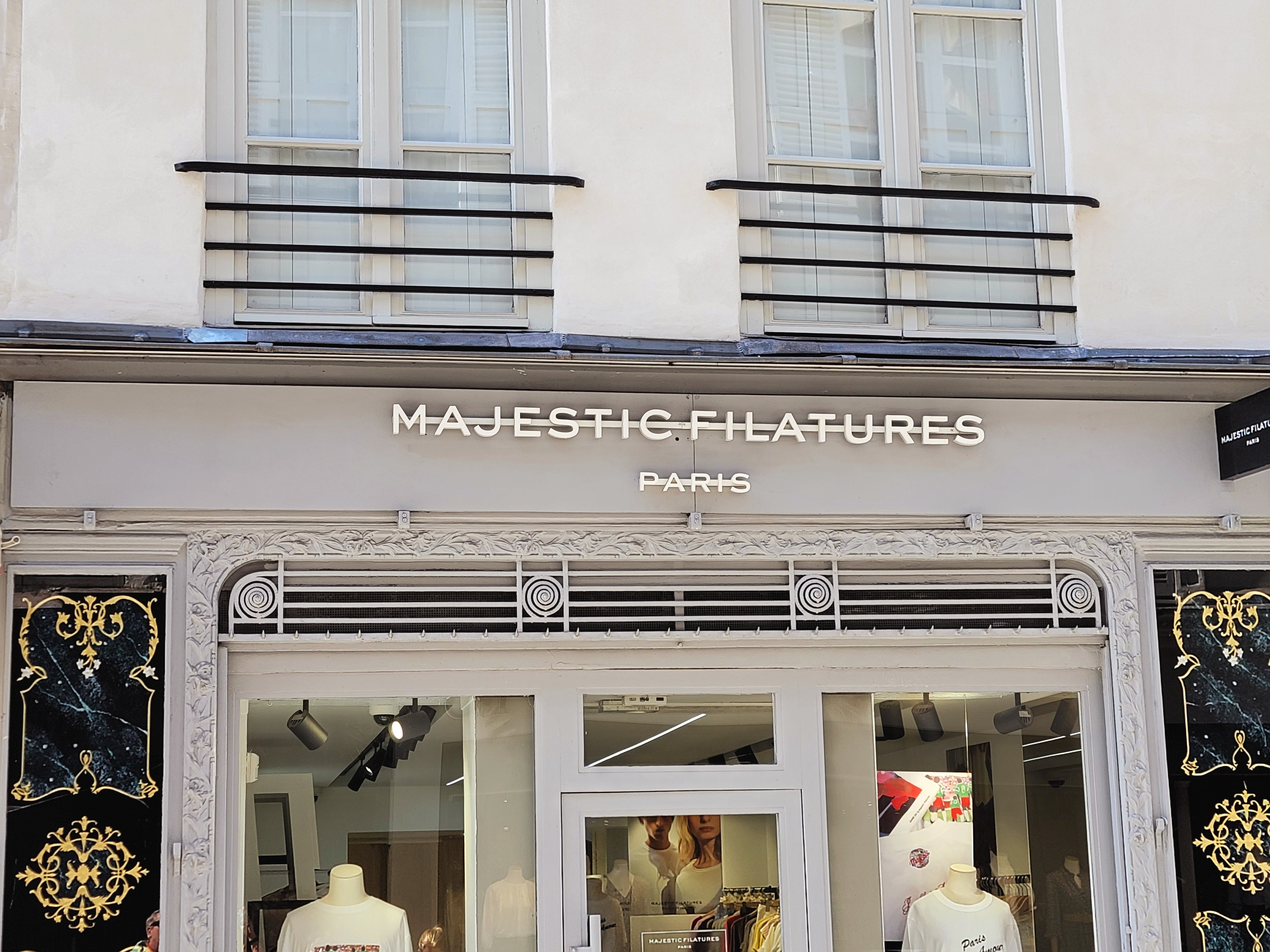

Note the hooks under the eaves on the photos to the left, above? It used to be a butcher shop and that’s where the butchers would hang their “wares.” Now, even if you are selling something else, you must leave these remnants on the shop. On the big one, the pictures are of people milling and farming wheat – since a lot of the population was illiterate, this indicated to them it was a bakery.
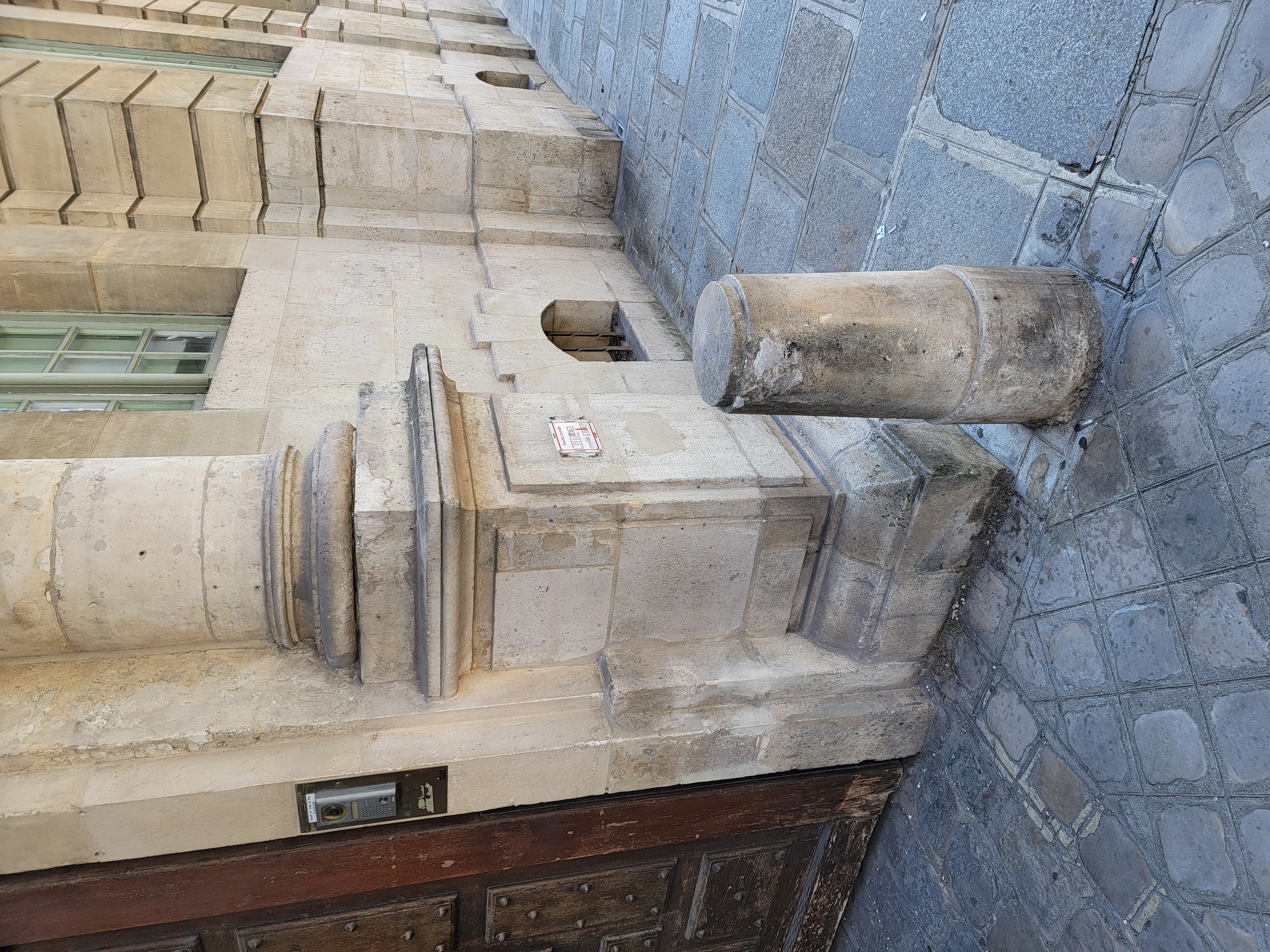

These “bumpers” are so that carriages could get straight into a courtyard. Once you know what they are, you see them everywhere – some are pipes, some are shaped like dolphins, etc.
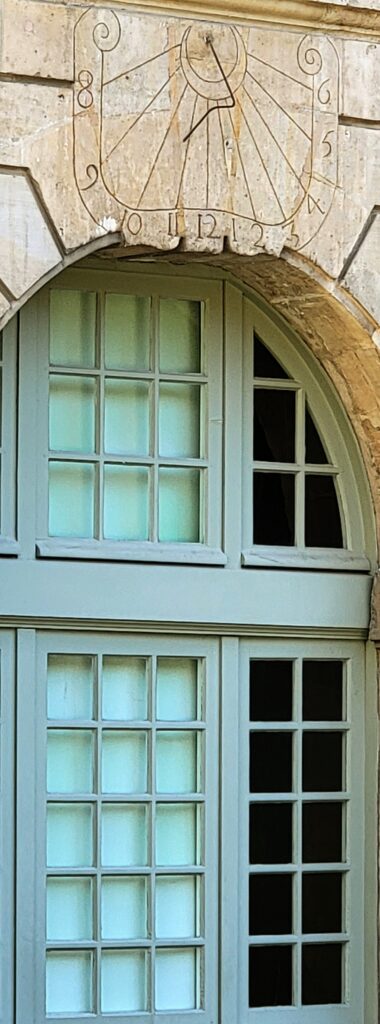
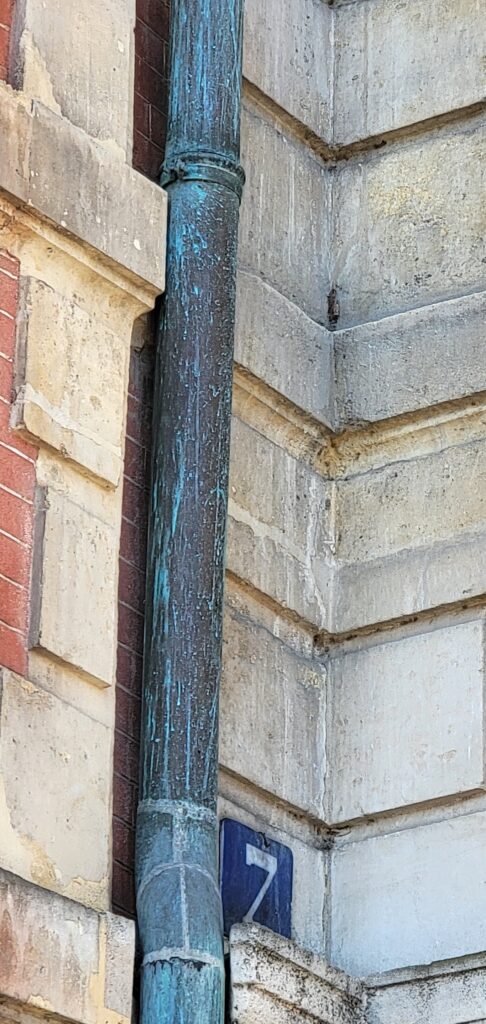
The above is a sundial – what’s missing? The number 7. This building, however, is “#7” and so one of the theories is that 7 is missing is because the owners thought “WE are 7.” LOL.
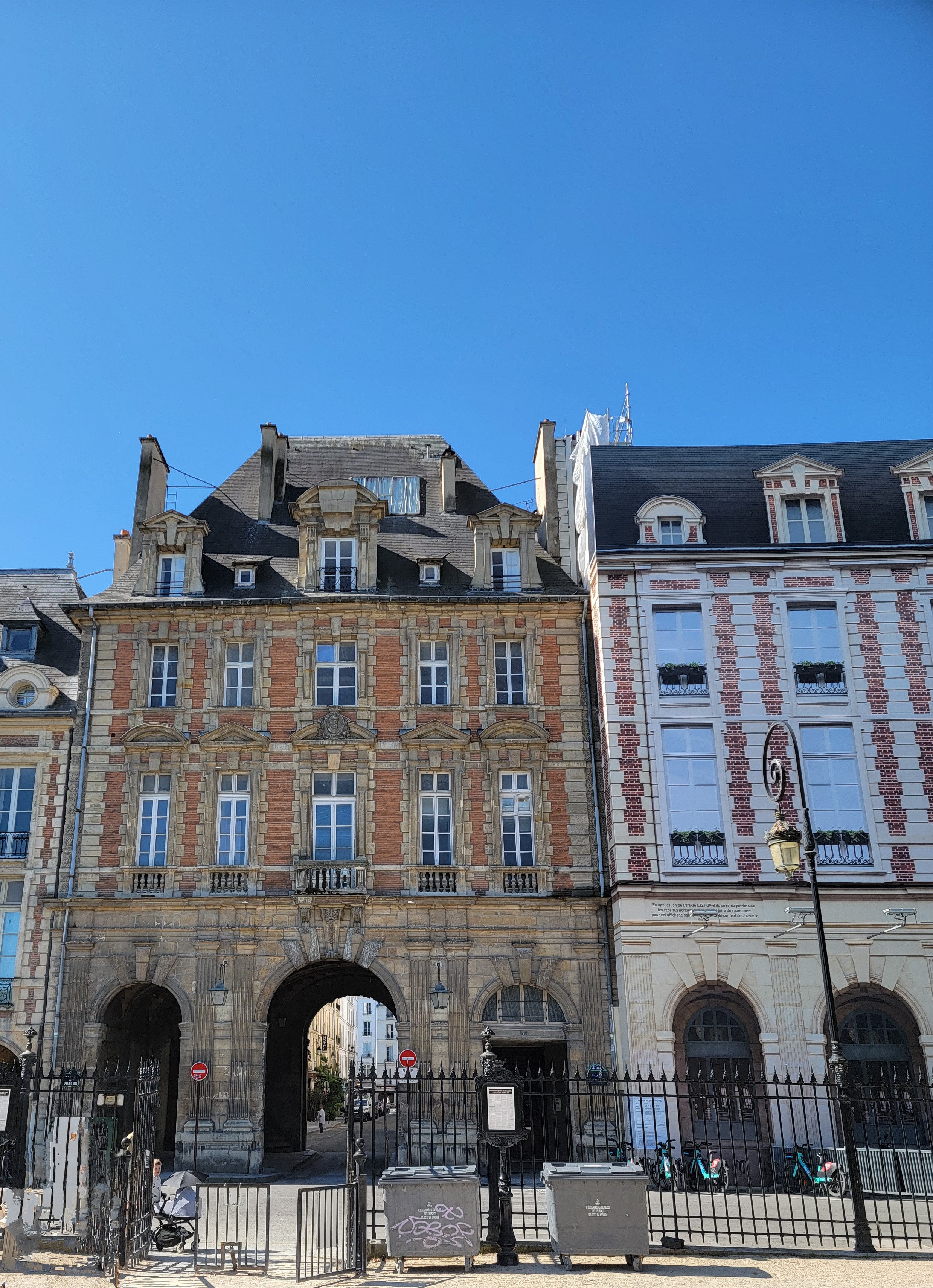

We headed to the Place de Vosges. In 1605, it was the “royal square” – this was before the royalty moved out to Versailles. The king had his living quarters on one side of the park, the queen on the other. During that time there was a tax on glass, so people would come to the park at the Place de Vosges, and “faint at the sight of” all the glass surrounding that park. Not only that, but the terra cotta bricks were incredibly rare, as they had to be imported from Italy.
The houses to the side of the king’s and queen’s were given as gifts – now, this is the most expensive real estate in Paris. About 80 years ago, the whole houses were changed to flats because the taxes were so high (though the same family does live in a few of them still). The little “garret” studio apartments at the top are 10×10, and rent out for something like $1,600/month – recently one sold for something completely insane (in the multiple millions). This park is different than most in Paris – where you’re not even allowed to *look* at the grass, much less walk on it – as the families can use it to picnic, play with their kids, etc.
The mansion to the right in the photo (that looks super white) is actually covered with a print to show what the building “will” look like. It was bought by a French jillionaire, who has now spent more than he paid for for the building, and there is more to do. It was $25 million (purchase) and $31 million so far (reno), in my mind.


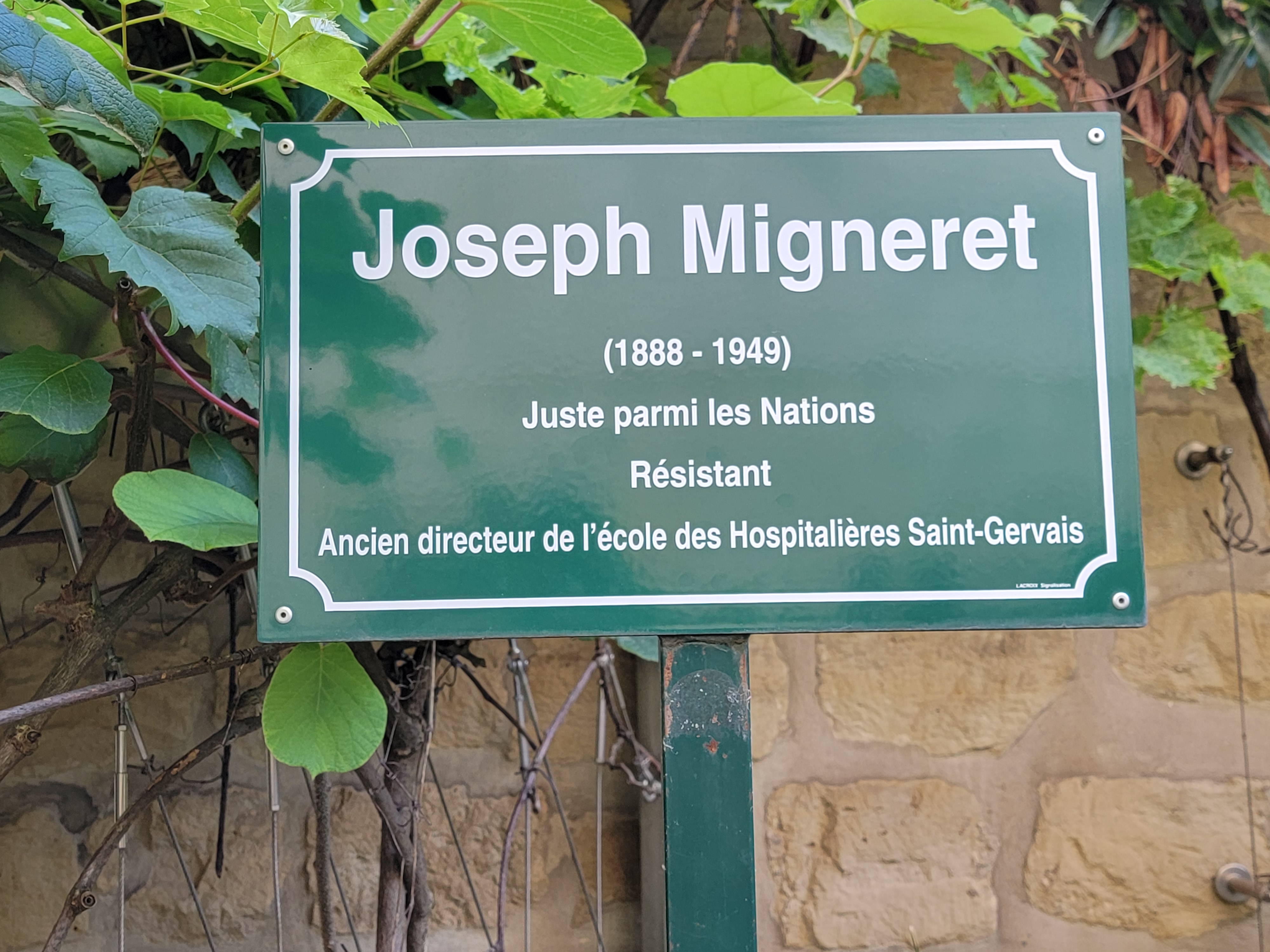


Joseph Migneret, named above, saved so many children from the Nazis in Paris that he was commemorated. (The Marais is still a Jewish district – well, and a LGBTQ district – and….) The French have a “problematic” relationship with WW2, because so many collaborated, and actually knew what was going on with the deportations, etc. (That was detailed on the monuments in Pere Lachaise as well.)
The names on the wall are of children from this neighborhood that were *not* saved. Note the ages. (“Ans” = years, “Mois” = months, “Jours” = Days)
The museum on the right is on the history of Paris – super accessible (as opposed to, say, the Louvre!)
Phrygis is everywhere. This is from the side of a postal van speeding past.
Here are just some random photos from the neighborhood….Rue Des Francs Bourgeois may not be “the street of perfumers,” but every single store along this small road was indeed a cologne or perfume shop of some kind, and the entire street was scented!



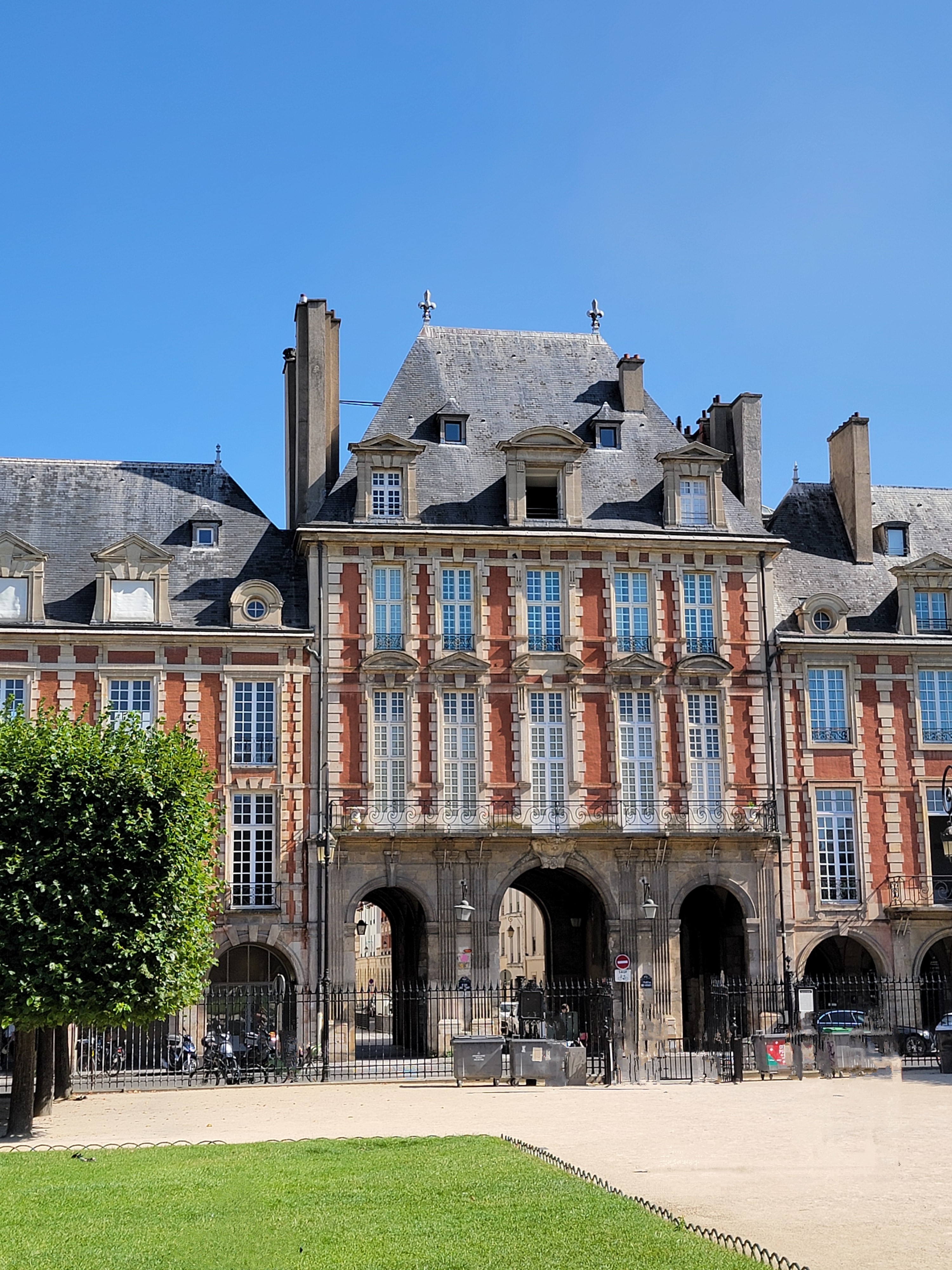




And then, below is where we wound up for our late afternoon “snack” of a crepe with lemon and sugar (me) and a strawberry sorbet for Leann. I mentioned to Leann that she should practice ordering “eau petillante” (bubbly water), since she always gets a liter. When she was ready to order, she practiced on me, and asked for “eau papillon” (butterfly water). It was The Best Ever. I did tell her I would do the ordering, but – Hello! – that’s our new name for bubbly water!!




I know, I know, I’m woefully behind on the blog. Here’s the deal. Today (which is Day 13) we had NOTHING until 5:30 p.m. We wanted to get out by about noon to visit the Arc de Triomphe, the Opera, and the Galeries Lafayette. We got up early, had breakfast in the hotel . . . And the blog wouldn’t let me in. Then it wouldn’t upload photos. So ultimately, I had to leave, having done ZERO, NOTHING, BUPKIS. I super feel behind now too.
From today (Day 13) I have to upload Arc de Triomphe, Opera (Leann’s favorite spot so far), Galeries Lafayette, Women’s Skateboarding Finals, Pizza at our local amazing place. (Steps today = 12,267)
Tomorrow (Day 14) we have two tours with the Aments – a food/wine/patisserie tour of the Montmartre area, and a Seine dinner cruise. There will be more photos. If this software won’t let me in, I can’t keep up. And I’m not happy. :-(
Aaaaaand, today IS tomorrow (Day 14) – I’m trying!


